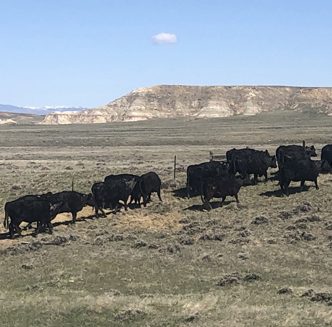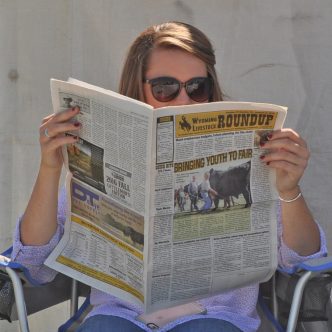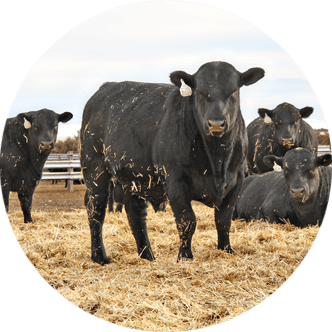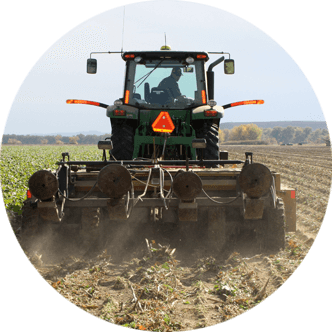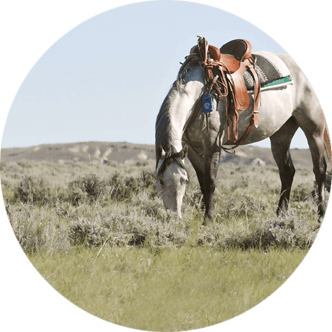UW Extension provides reseeding and wildfire recovery solutions
The 41st Annual Fremont County Farm and Ranch Days, held on Feb. 5-6 at the Fremont County Fairgrounds in Riverton, hosted University of Wyoming (UW) Agriculture and Natural Resource Extension Educator Barton Stam from Hot Springs County, who provided information on reseeding pastures and wildfire recovery.
Stam has served UW Extension for more than two decades, holding several leadership roles including serving as an elected chair of the range initiative team and cofounding UW Extension’s annual Ranch Camp.
Pasture seeding
Reseeding a portion of pasture from time to time is needed to maintain productive pastureland.
Stam affirmed a productive pasture is contingent upon a good plan, careful management and clear goals.
“Reseeding can be necessary to increase nutritional value, eradicate weeds, fill in bare spots or improve the land after disease issues or poor management,” he stated. “However, it is important to determine the reason behind the necessity for reseeding.”
A valuable question Stam encouraged producers to consider when planning to reseed a pasture is whether the pasture is irrigated or not. This information can guide effective reseeding strategies, as reseeding an irrigated pasture has far fewer risks than a dry pasture.
Stam added, “Evaluating site potential is crucial for unlocking opportunities for pasture development. By analyzing soil conditions through soil testing and understanding what has thrived in the area historically allows producers to make informed decisions on reseeding and the future success of pasture growth.”
Reseeding a pasture involves more than simply spreading seeds on the ground, it is a complex process including several essential steps, starting with testing the soil, preparing the soil, selecting the appropriate seed mix and then planting the seeds successfully.
“Preparing the seed bed requires a careful balance,” he explained. “The ground can’t be too hard or too soft, it needs to be just right. Ideally, the soil should be a uniform, firm seed bed that isn’t excessively hard, ensuring good seed-to-soil contact.”
When selecting a seed mix, it’s important to consider the specific goals and overarching purpose of the reseeding project. A thoughtful approach will help when choosing the most suitable mix for the project.
“Is the end goal to have a flower bed, a green strip to reduce wildfire danger or to have winter pasture for livestock?” Stam asked. “Each of these projects will need specific seeds selections to be successful.”
Planting options
Planting with a no-till planter or drill gives individuals a wide variety of options to maximize plant establishment and yields.
“With any type of planting equipment, it is important to understand the seed and seed mix being planted,” Stam explained. “A seed drill sows seeds in rows at a specific depth, planting crops more efficiently.”
Seed drills position seeds in the soil, bury seeds to a specific depth, sow seeds at the proper seeding rate, distribute seeds evenly and prevent overcrowding.
“Another method of seeding is broadcast seeding – when the seed is spread out on the soil surface and requires a lot of seed,” Stam stated. “Make sure when purchasing seed for broadcasting to double the ratio of what would be used in seed drilling.”
It is essential to ensure a proper planting window based on seed type while also considering how weather conditions may affect the success of seeding.
He said, “When dryland seeding, be extremely careful with timing, as seeds and equipment are expensive. If planting is getting bumped into late March, April or past this window, the risk of failure increases.”
Seed depth
The depth and rate of seeding will depend on the species chosen in the seed mix, and if not done properly, the seed will never get the chance to grow as it does not have good seed-to-soil contact.
“Planting perennial grasses is very different than planting annual grains,” Stam stated. “Perennial grasses are very tiny seeds, and the seed depth is close to an eighth to a quarter of an inch.”
If the seed is planted too deeply, the failure rate increases, so the seed size must match the type of seeding being performed, he explained.
An effective method for planting oats is to use a grain drill, which allows for adjustable depth rates.
He added, “The actual depth of the seed may depend on soil conditions, so it’s important to look for rocks and pebbles in the soil prior to seeding.”
It’s critical producers do everything possible to achieve proper planting depth, giving their latest investment an opportunity for success.
Another option when planting seeds is to use no-till drills, planting depths are adjusted by the cutting depth of the rolling coulter in front of the drill.
Grazing management plan
Implementing a grazing management plan helps inventory resources and provides a roadmap to improved pasture management.
Stam noted, if a producer is going through all of the trouble to reseed pastures, having a plan will help with sustainability in terms of keeping the species planted and established.
Having a grazing management plan is essential to the success, longevity and profitability of an operation and is a resource which helps to optimize productivity of the land through implementation of cost-effective practices supporting forage growth and quality and livestock productivity.
“I hate to see a lot of efforts and resources diminish because there was not a grazing management plan implemented,” he added. “A grazing management plan can help to further the farm or ranch’s resilience and increase the efficiency.”
Grazing management decisions made today can have a lasting impact on the success of the operation, and the development and regular use of a written grazing management plan allows producers to track and evaluate methods for protecting and improving the operation.
Post-fire recovery
Post-fire recovery is vital for producers, and an important aspect to focus on is their vision for the recovery process.
“Many producers want to see grass revitalized in the aftermath of a fire, which can serve as a foundation for rebuilding and improving their landscapes,” Stam said.
However, many considerations must be reviewed, including the location of the fire, burn severity, erosion potential and the potential soil seed bank.
He explained, although the immediate aftermath of a fast-moving fire can look quite devastating, pasture grasses are resilient and can recover, especially if normal precipitation occurs.
It is not uncommon to see more annual weeds show up in a pasture after a fire. While this may seem concerning, these weeds can actually be useful and have some forage value or the ability to turn into residue and cover at the end of the season, but their numbers will decline the following year.
“According to current research, light to moderate grazing, especially after the first spring growth season, doesn’t have much of a long-term impact on vegetation,” Stam concluded. “But in a lot of cases, in a lot of burns, I’m very comfortable grazing it, especially with a well-managed grazing plan.”
Melissa Anderson is the editor of the Wyoming Livestock Roundup. Send comments on this article to roundup@wylr.net.

